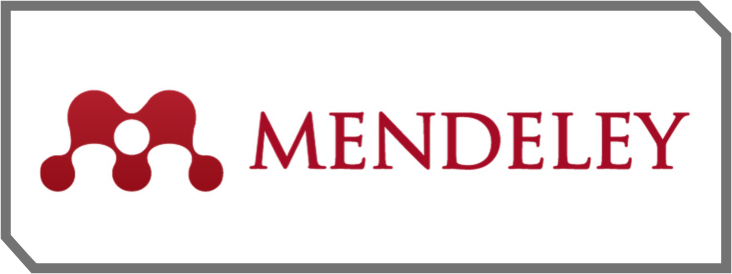Penerapan Model PBL untuk Meningkatkan Hasil Belajar IPAS Siswa Kelas V MI Swasta
DOI:
https://doi.org/10.59841/ihsanika.v3i2.2642Keywords:
Problem Based Learning (PBL), IPAS, Learning OutcomesAbstract
This thesis discusses the use of problem based learning (PBL) models in natural and social science (IPAS) subjects to improve student learning outcomes in class V of private Islamic elementary schools in Tarbiyah Islamiyah Jelutung, Jambi City in 2024/2025. This study uses classroom action research (PTK) by implementing II cycles or action rounds. Data collection techniques in this study use planning, observation, documentation, test and non-test instruments in learning using the problem based learning (PBL) model. The results of this study indicate that there is an increase in student learning outcomes in natural and social science (IPAS) learning using the problem based learning (PBL) model, this is evidenced by the increase in the percentage of test results from cycle I and cycle II. In the pre-cycle, namely 29.41%, cycle I, namely 47% of students who completed this had not reached the percentage of completeness, and continued with cycle II, namely 76% of students who completed had met the completeness. The findings of this study state that by implementing the problem based learning (PBL) model, it can improve student learning outcomes in natural and social science (IPAS) subjects with the material Harmony and Ecosystems.
References
Aisyah, F. N., & Gumala, Y. (2025). Implementasi model problem-based learning (PBL) sebagai upaya meningkatkan kemampuan berpikir kritis peserta didik sekolah dasar: Literature review. [Nama Jurnal jika ada], 4, 1–14.
Arifin, M., Yunira, Y., Harahap, S. E., & Marbun, E. (2024). Penerapan model PBL dalam pembelajaran IPAS untuk meningkatkan motivasi dan hasil belajar siswa. [Nama Jurnal jika ada], 5(4), 6109–6121.
Arikunto, S., & Suhardjono, S. (2021). Penelitian tindakan kelas. Bumi Aksara. https://www.sman2prg.sch.id/upload/file/71262145PTKAdiWahyudiNoor,S.Pd.pdf
Asih, N. L. S. M., Sujana, I. W., & Rizkasari, E. (2024). Penerapan model inquiry learning berbantuan media audio visual untuk meningkatkan hasil belajar IPAS siswa kelas V SD No. 1 Kuta. Action Research Journal Indonesia (ARJI), 6(1), 46–51. https://doi.org/10.61227/arji.v6i1.154
Firdaus, I., Hidayati, R., Hamidah, R. S., Rianti, R., Cahyuni, R., & Khotimah, K. (2023). Model-model pengumpulan data dalam penelitian tindakan kelas. Jurnal Kreativitas Mahasiswa, 1(2), 107.
Hanun, Y. A., & Asyari, A. (2023). Penerapan model pembelajaran problem based learning untuk meningkatkan hasil belajar siswa. Global Education Trends, 1(2), 414–423. https://doi.org/10.61798/get.v1i2.43
Magdalena, M., & Maria Pawe, Y. (2023). Mimbar PGSD Flobamorata, 1(3), 118–126. https://e-journal.unmuhkupang.ac.id/index.php/jim/index
Maryati, E., Sholeh, M., Saputra, M. R., Viqri, D., Simarmata, D. E., Yunizha, T. D., & Syafitr, A. (2024). Analisis strategi guru dalam meningkatkan motivasi belajar siswa di kelas. Jurnal Inovasi, Evaluasi dan Pengembangan Pembelajaran (JIEPP), 4(2), 165–170. https://doi.org/10.54371/jiepp.v4i2.408
Maulana, N., & Selian, K. (2025). Tinjauan kemampuan pemecahan masalah matematis dalam meningkatkan hasil belajar menggunakan [judul tidak lengkap]. [Nama Jurnal jika ada], 6, 80–90.
Mi, S., & Amal, N. (2021). [Judul artikel tidak tersedia]. [Nama Jurnal], 13(2), 223–229.
Reski, R., Hutapea, N., & Saragih, S. (2019). Peranan model problem based learning (PBL) terhadap kemampuan pemecahan masalah matematis dan kemandirian belajar siswa. JURING (Journal for Research in Mathematics Learning), 2(1), 49. https://doi.org/10.24014/juring.v2i1.5360
Sakinah, T. A., Alya, R., & Azim, A. (2025). Pemikiran modern tentang pendidikan. [Nama Jurnal jika ada], 3, [halaman tidak dicantumkan].
Salim, F., & Fakhrurrozi, M. (2020). Efikasi diri akademik dan resiliensi pada mahasiswa. Jurnal Psikologi, 16(2), 175. https://doi.org/10.24014/jp.v16i2.9718
Salim. (2020). Penelitian tindakan kelas. Perdana Publishing.
Widianita, R. (2023). No 主観的健康感を中心とした在宅高齢者における健康関連指標に関する共分散構造分析. AT-TAWASSUTH: Jurnal Ekonomi Islam, 8(1), 1–19.
Downloads
Published
How to Cite
Issue
Section
License
Copyright (c) 2025 IHSANIKA : Jurnal Pendidikan Agama Islam

This work is licensed under a Creative Commons Attribution-ShareAlike 4.0 International License.










